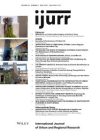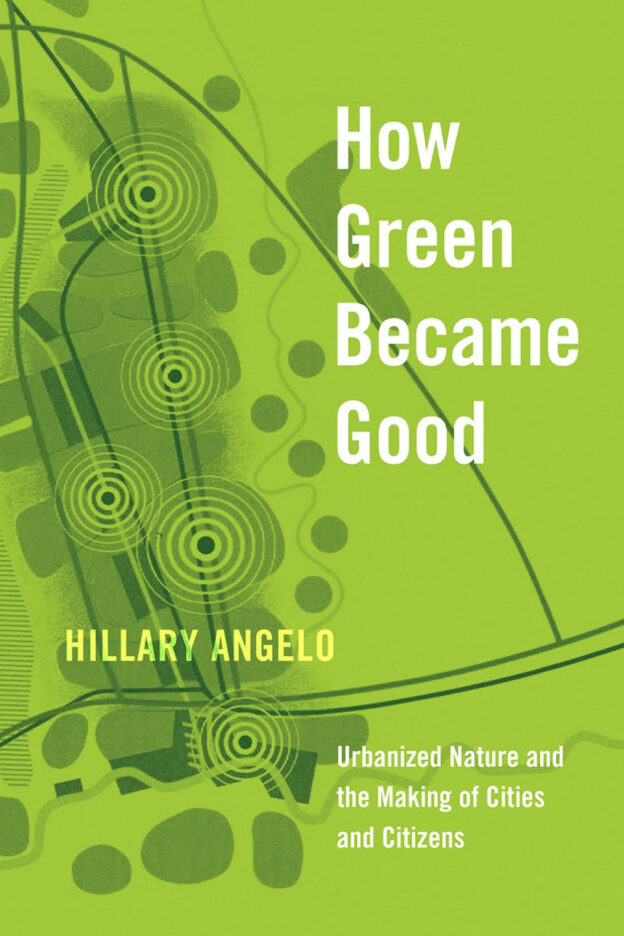In How Green Became Good, Hillary Angelo systematically demonstrates how planning and political elites adopt and continually redefine the social imaginary of ‘urbanized nature’ in pursuit of shifting economic, social and political goals. Drawing on rich archival sources covering a century and a half and, in later chapters, in-person interviews in the peri-urban region of the Ruhr Valley in the German state of North Rhine-Westphalia, Angelo shows how greening is central to the process of making cities and their citizens.
Greening as a productive process counters the dominant interpretation of park-building and tree-planting as a planning strategy offered in reaction to the filth and moral losses of rapid urbanization. Faced with transformative episodes of rapid industrial development (early nineteenth and twentieth centuries), mining and manufacturing closures (mid-twentieth century), and large-scale post-industrial redevelopment (late twentieth and early twenty-first centuries), the Ruhr Valley’s political elites and planners leveraged and revised ideas of urbanized nature to materially organize and politically manage citizens. Depending on the historical moment and the elites’ dominant priorities, nature as idea and practice was employed to produce citizens that were, in turn, docile and unified, democratically engaged, or passively receptive to top-down land redevelopments. In the pursuit of creating ideal urban citizens, Angelo argues that this process constructed the cities themselves.
Angelo organizes her analysis into three pairs of chapters, each exploring a historical moment in the Ruhr Valley’s urban history that catalyzed a new vision of greening. Chapters 1 and 2 trace how industrial elites used an already recognizable trope of urban greening to render legible their rapidly changing region. In the last decades of the nineteenth century, industrial barons transformed disparate agricultural communities into a loosely centralized network of mining and manufacturing ‘colonies’. This paternalistic organizational form echoed similar company towns in Europe and the United States and framed nature as a utilitarian good, useful to worker-citizens seeking subsistence through gardens and animal husbandry. However, as cities concentrated more economic and cultural power in the early twentieth century, a core group of Ruhr Valley elites reimagined their colonies as cities, and their nature as an ‘indirect, universal, and aspirational good’ (p. 25). Through discourse and regional planning, local leaders applied the ‘garden city’ concept to the region’s largest amalgam of industrial colonies to translate the Ruhr Valley region’s relative rurality into an urban conglomerate, increasingly interconnected in a city-centered world.
In chapters 3 and 4, Angelo considers how the concept of urbanized nature was further reinterpreted by Ruhr Valley elites in the post-war social upheaval of the 1960s. As the first waves of mine closures and manufacturing decline eroded the economic coherence of the Ruhr Valley, urban planners and policymakers imagined nature not as a way to make a city, as they did at the turn of the century, but rather as a physical and ideological enabler of leisure, social coherence and, when possible, political organization. Mapping locally pertinent archival materials onto concurrent national discourses in social science and urban planning, Angelo illuminates how political actors framed recreational riverside parks, historical preservation efforts and housing developments as opportunities for residents to find belonging in a changing economy.
Chapters 5 and 6 bring the greening story into the twenty-first century. Merging document analysis with interviews and ethnography, Angelo interrogates how the naturalization of urban greening as ‘good’ in the wake of industrial decline and contested forms of economic renewal in the 1990s and early 2000s rendered the prevalent power structures invisible, and muted the very democratic engagement that the prior era of greening had aimed to produce. Angelo critiques how discourses of urban nature as unequivocally morally and socially valuable foreclose questions concerning what—and who—greening redevelopment actually benefits. These chapters consider the design, implementation and public response to a large-scale artificial lake and regional park located on former steel mill property in the city of Dortmund. Because it is so challenging to dispute the discursive frames around the imaginary of urbanized nature, Angelo suggests that greening too often gives elites carte blanche to reimagine public space in socially uneven ways. This last case motivates Angelo’s call for urban and regional planners to reconsider how to green ‘better’ and more equitably.
Across the arc of this book two thematic strengths emerge. First, the case selection provides a welcome challenge to traditionally stark divisions between urban and rural. The Ruhr Valley is a metropolitan region that, to this day, retains unique rural characteristics—low density of population, dispersed city centers, and ample public parks, fields, gardens and riverfront public grounds. These blurry categorical lines give weight to Angelo’s argument that urbanization, like greening, is an aspirational ‘social and spatial idea’ (p. 30). City planners and elites in the Ruhr Valley have found utility—economic, political and cultural—in constructing the region as urban and thus worked to align their practices and policies with the dominant urban ideals.
Second, this book offers important insights into how ideas are always entangled with the materiality of everyday life. This theme emerges in Angelo’s illuminating emphasis on housing as foundational to the practice of urbanized nature. Across generations, localized discourses praising the moral good of gardens, riverfront parks or greenspace redevelopment were entangled with the construction or renovation of housing. From the paternalistic industrial colonies of the late nineteenth century to the development of modern high-rises a century later and the early twenty-first century conflicts over landscape beautification, elites recognized how the relationship of nature to housing created a ‘representation in the landscape’ of the ‘pathologies and possibilities of urbanism’ (p. 34). It was at the nature-housing nexus that residents’ core experiences of citizenship, space and place emerged.
How Green Became Good provides a timely denaturalization of the now-familiar moral claims about urbanized nature by systematically tracing how taken-for-granted meanings were intentionally constructed over time by actors with shifting economic and political concerns. This book will be required reading for scholars of urban and regional planning, environmental and cultural sociologists, geographers concerned with the multivalent meanings of nature, and students seeking exemplars of comparative historical and multi-method research.
Amanda McMillan Lequieu is an Assistant Professor in the Department of Sociology at Drexel University, Philadelphia. More information can be found here.
Hillary Angelo. How Green Became Good: Urbanized Nature and the Making of Cities and Citizens. Chicago, IL: University of Chicago Press. © 2021. Cover used with permission of University of Chicago Press.
Views expressed in this section are independent and do not represent the opinion of the editors.

